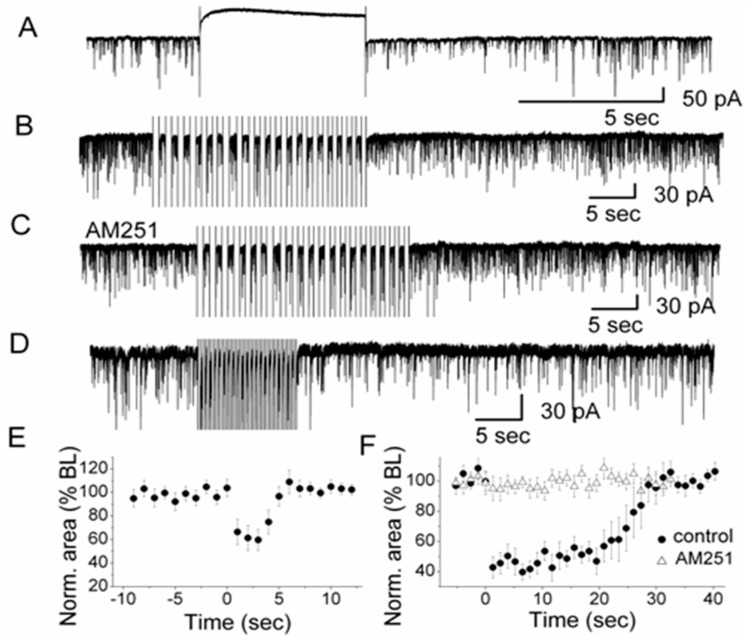Figure 3.
Depolarization-induced Suppression of Inhibition (DSI) in olfactory glomeruli. (A) A depolarizing voltage step (indicated by the 5-s silent trace in the recording) evoked DSI in a representative external tufted cell after the end of the voltage step. High Cl−-based pipette solution was used for recording sIPSCs. Depolarization was achieved by stepping from −60 mV holding potential to 0 mV for 5 s; (B) In the presence of CNQX and APV to block ionotropic glutamate receptors (NMDA and AMPA receptors), a train of 20 voltage steps to 0 mV (0.75 Hz; step duration: 667 ms) transiently reduced sIPSCs in an external tufted cell. Holding potential was −60 mV; (C) In the presence of CB1R antagonist AM251, no sIPSC suppression was observed, i.e., DSI was mediated by CB1R; (D) A train of 20 voltage steps to −30 mV (2 Hz; step duration: 250 ms) which mimicked natural rhythmic bursting of external tufted cells, transiently reduced sIPSCs in an external tufted cell (in CNQX and APV); (E) Normalized sIPSCs area illustrating the magnitude and time course of DSI elicited by a 5-s depolarizing pulse (n = 7). The averaged values between 0–5 s after the end of the voltage step were significantly different from the baseline (ANOVA and Bonferroni post-hoc analysis, p< 0.05); (F) Normalized sIPSC area illustrating the magnitude and time course of DSI elicited by a train of depolarizations to 0 mV (n =12) in control and in the presence of AM251 (n = 10). In control conditions, the averaged values between zero to 25 s after the end of the train of voltage steps were significantly different from the baseline (ANOVA and Bonferroni post-hoc analysis, p< 0.05). From [18] with permission of the Society for Neuroscience.

